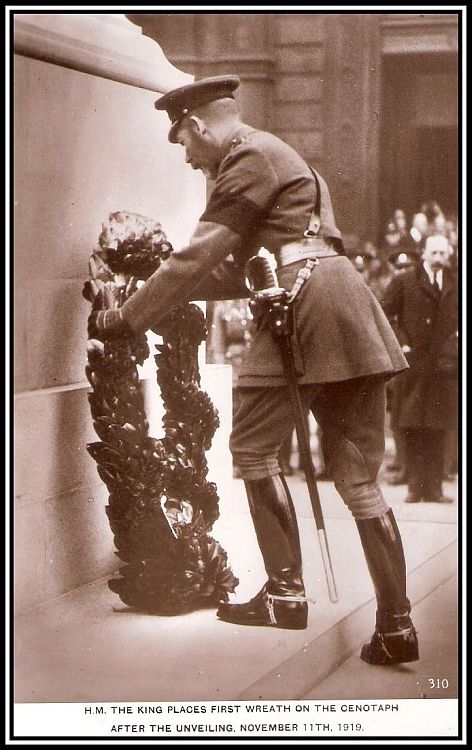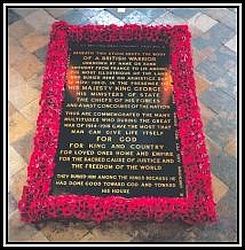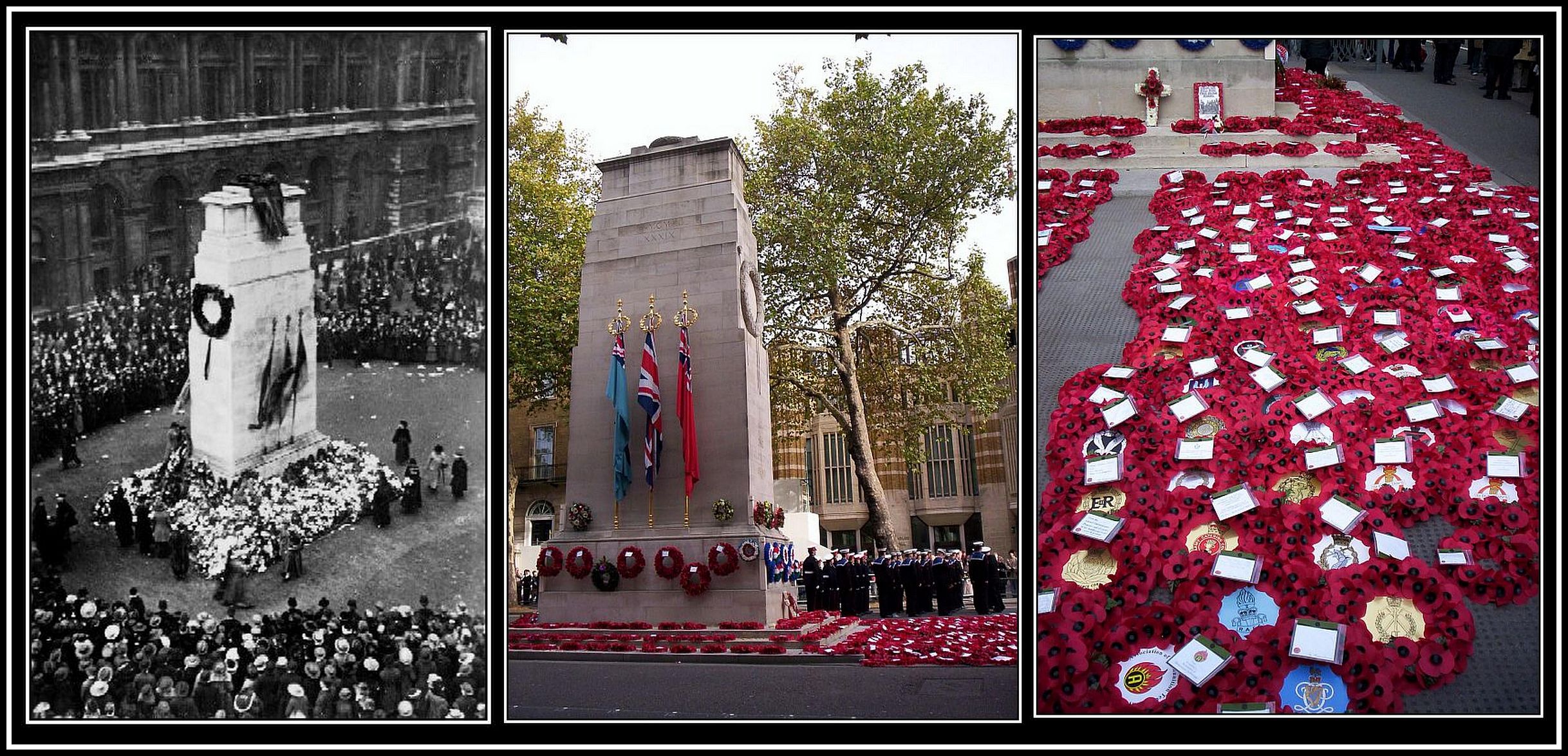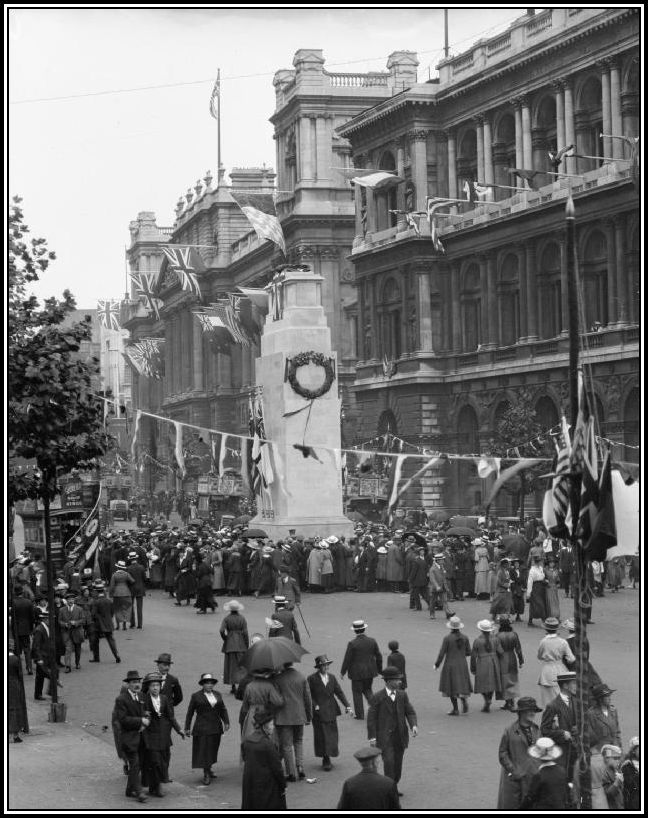POSTCARDS FROM OLD LONDON
THE CENOTAPH
by
DAVE HILL
 Postcard detailing King George V placing the first wreath at the foot of The Cenotaph on November 11th, 1919.
Postcard detailing King George V placing the first wreath at the foot of The Cenotaph on November 11th, 1919.
The monarch has continued this tradition each year since then together with the laying of wreaths by other dignitaries including various members of the Royal Family, the Government and members of the Opposition, religious leaders and representatives from allied countries.
Perhaps the most moving part of the Ceremony comes towards the end once all the dignitaries have left and when members of the waiting and watching public,including old soldiers, file past and lay their flowers and notes in remembrance of the loved ones that fell in battle over the years. Their tribute is accompanied musically by the Band of the Royal Marines who play hymns and tunes of the First World War as the procession continues.
On the previous evening, a Festival of Remembrance takes place at The Royal Albert Hall where the climax of the evening comes when one million poppies made by disabled veterans.
The Cenotaph was designed by Sir Edwin Lutyens as part of the Peace Celebrations which took place on the June 28th 1919. Troops of the victorious armies, French, Belgian and American together with the British army marched down Whitehall, past The Cenotaph and then up the Mall to be reviewed by the King from a temporary dais outside Buckingham Palace.
The structures including The Cenotaph were made of wood and plaster and were planned to be temporary. Their construction was achieved within a few weeks and the plan was to remove them, however the simple Cenotaph caught the imagination of the man-in-the-street and quickly gained approval as a suitable focus for the nation’s remembrance. Men doffed their hats to it (remember in the 1920’s and 30’s everybody wore a hat!) as they passed it. Bus and taxi drivers who passed it many times a day would do so each time. Although there were plans in the works to ensure that war memorials were constructed in most towns and villages together with the foundation of the Commonwealth War Graves Commission in France and elsewhere, along with the placing of the Tomb of the Unknown Warrior in Westminster Abbey, The Cenotaph became the centre of the nation’s commemoration of the war dead.
 The plaque associated with the Tomb of the Unknown Soldier, Westminster Abbey
The plaque associated with the Tomb of the Unknown Soldier, Westminster Abbey
By public demand, the temporary Cenotaph was replaced by a permanent stone one made from Portland Stone and was unveiled by the King in 1920 on what was to become Remembrance Day, 11th November. The ceremony was planned to coincide with the internment of the Unknown Warrior at Westminster Abbey. Today, after a nearly 100 years,
The Cenotaph remains the focus of Remembrance Day and many people will make a pilgrimage to Whitehall on the nearest Sunday to 11th November in order to salute it and remember the fallen.
 The Cenotaph at the time of its inauguration (left) & in 2009 (middle & right)
The Cenotaph at the time of its inauguration (left) & in 2009 (middle & right)
Scene at the Cenotaph, Whitehall, 19 July 1919
Permission to reproduce this photograph granted by the Imperial War Museum, London
Special thanks to Ms Helen Mavin for her patience and help
——oooOOOooo——
Click here to return to the POSTCARDS FROM OLD LONDON Home Page
——oooOOOooo——
Click here to return to the TABLE OF CONTENTS
——oooOOOooo——

